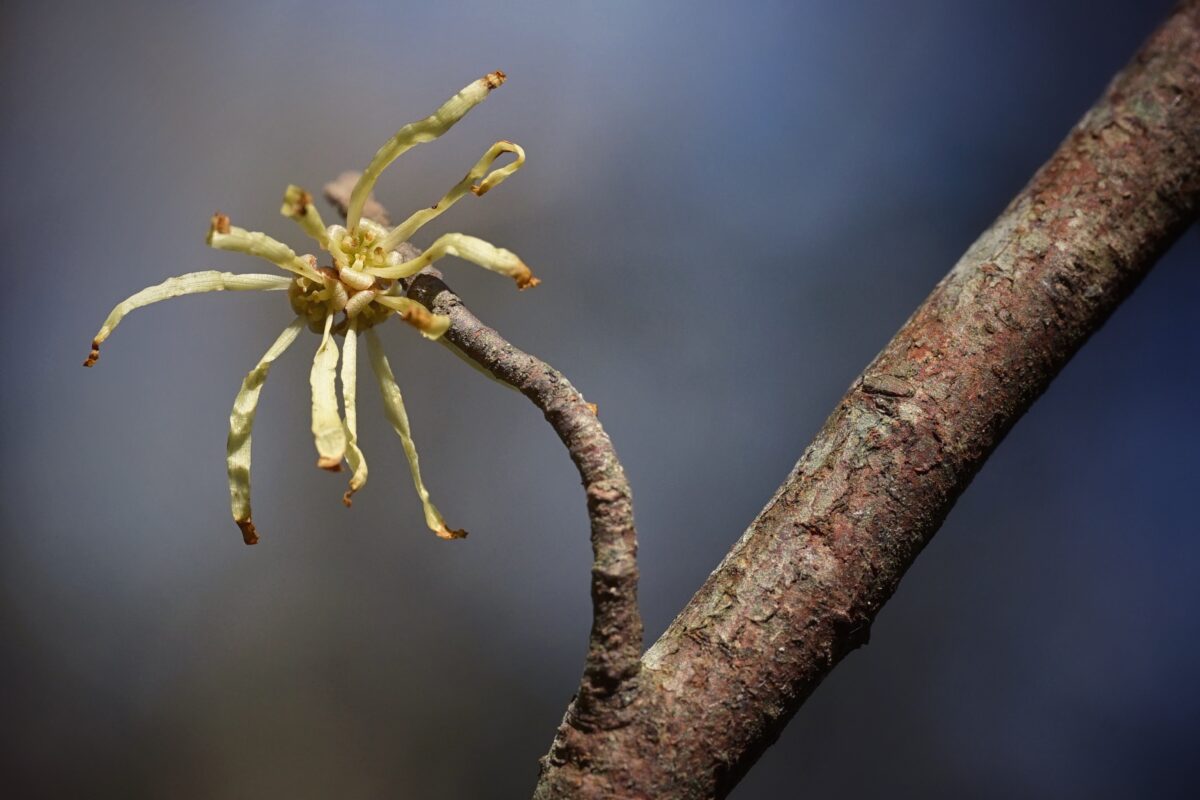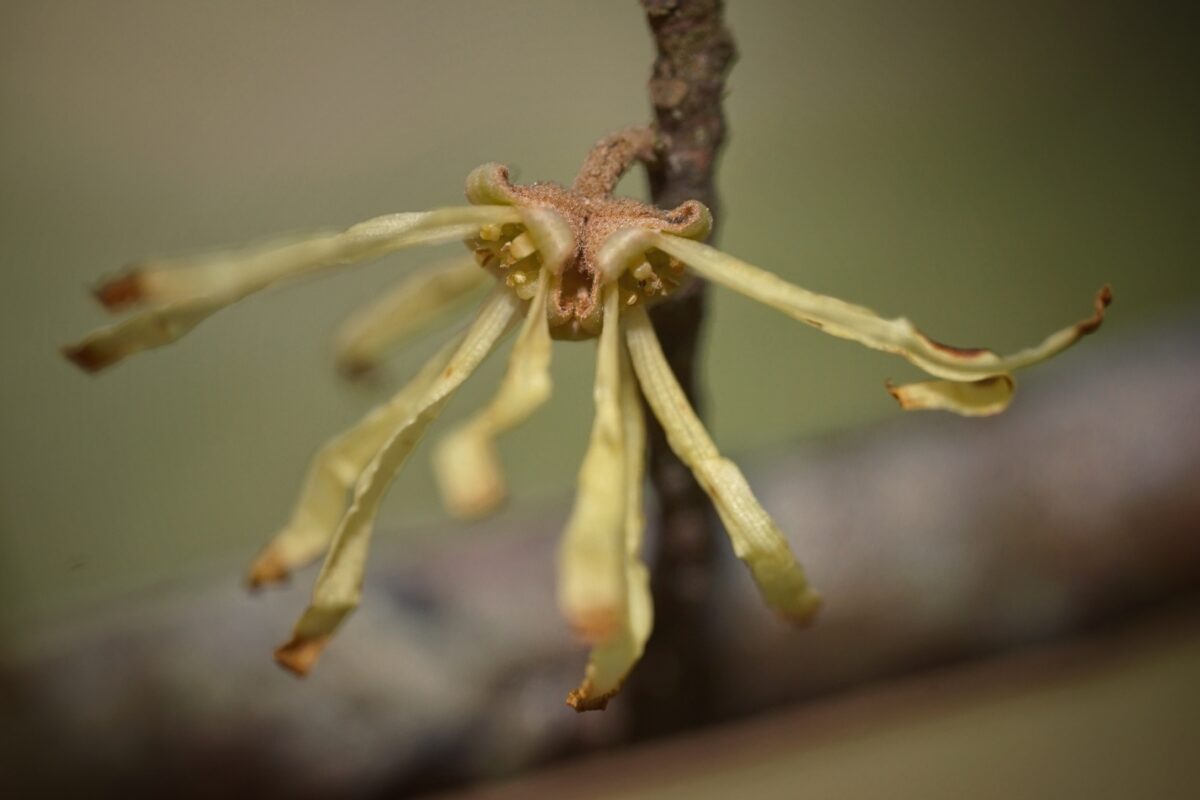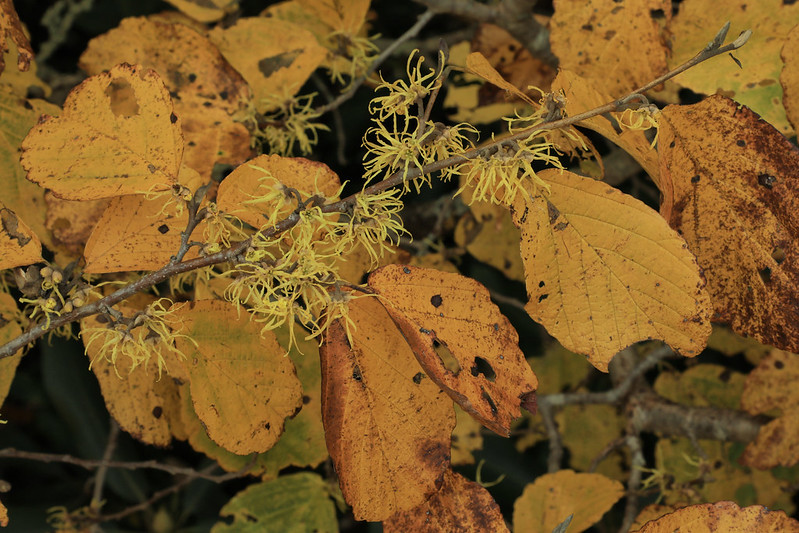American witch-hazel
Pictured above: American witch-hazel (Hamamelis virginiana) by Alan Cressler. Click on terms for botanical definitions. View post as a PDF.
There is little more whimsical than happening upon a fully blooming American witch-hazel (Hamamelis virginiana) on a late fall or early winter walk through the forest! This deciduous inhabitant of the understory is unusual in that when most other trees or shrubs are bearing fruit or seed, it is flowering. It can be found in mesic forests, hammocks and floodplains throughout eastern North America. Pollinated by moths, its fruits are a food source for birds and small mammals.
This shrub or small tree generally forms a multi-stemmed clump with arching branches. Simple alternate leaves are broadly ovate (2.5 to 6 inches long) and have wavy toothed margins. The upper surfaces are dark green with a paler green underside. The leaves turn a vibrant yellow to light orange before they fall. Clusters of fragrant yellow blooms have four distinct, very slender ½- to ¾-inch-long petals per flower. Note: Leaf size and flower color varies throughout its range. In Florida, plants have smaller leaves averaging 6.2 × 4.1 cm and the flowers are pale yellow as opposed to bright yellow.


Witch-hazel has a wide range of ethnobotanical uses and is still commonly used medicinally and cosmetically. The bending branches proved ideal for tools from bows to dowsing rods for Native Americans. Early settlers observed this and adopted the practice of dowsing with it. Teas and extracts from the bark, twigs and leaves have been used to treat numerous maladies. The most common uses are dermatological — reducing pain, swelling and itching from inflammation, lesions, insect bites, sunburn and more. Native Americans and early settlers also used it as a remedy for colds, kidney issues and as a gynecological aid. Research continues on its potential as an antiviral, antibacterial and even anti-cancer agent.
Family: Hamamelidaceae (Witch-hazel family)
Native range: Throughout North Florida and south to Highlands county
To see where natural populations of American witch-hazel have been vouchered, visit florida.plantatlas.usf.edu
Hardiness zone: Zones 8A–9B
Lifespan: Perennial
Soil: Rich, well drained loam from sandy to clay
Exposure: Part to full shade
Growth habit: Shrub to small tree averaging around 15 feet but can reach up to 35 feet
Propagation: Seed (requires cold stratification)
Garden tips: As a specimen plant, its fall color, winter blooms and irregular branching provide interest. Suitable for shade, it flowers most profusely in filtered sunlight and does best in moist sites.
American witch-hazel is occasionally available from nurseries that specialize in Florida native plants. Visit www.PlantRealFlorida.org to find a nursery in your area.

